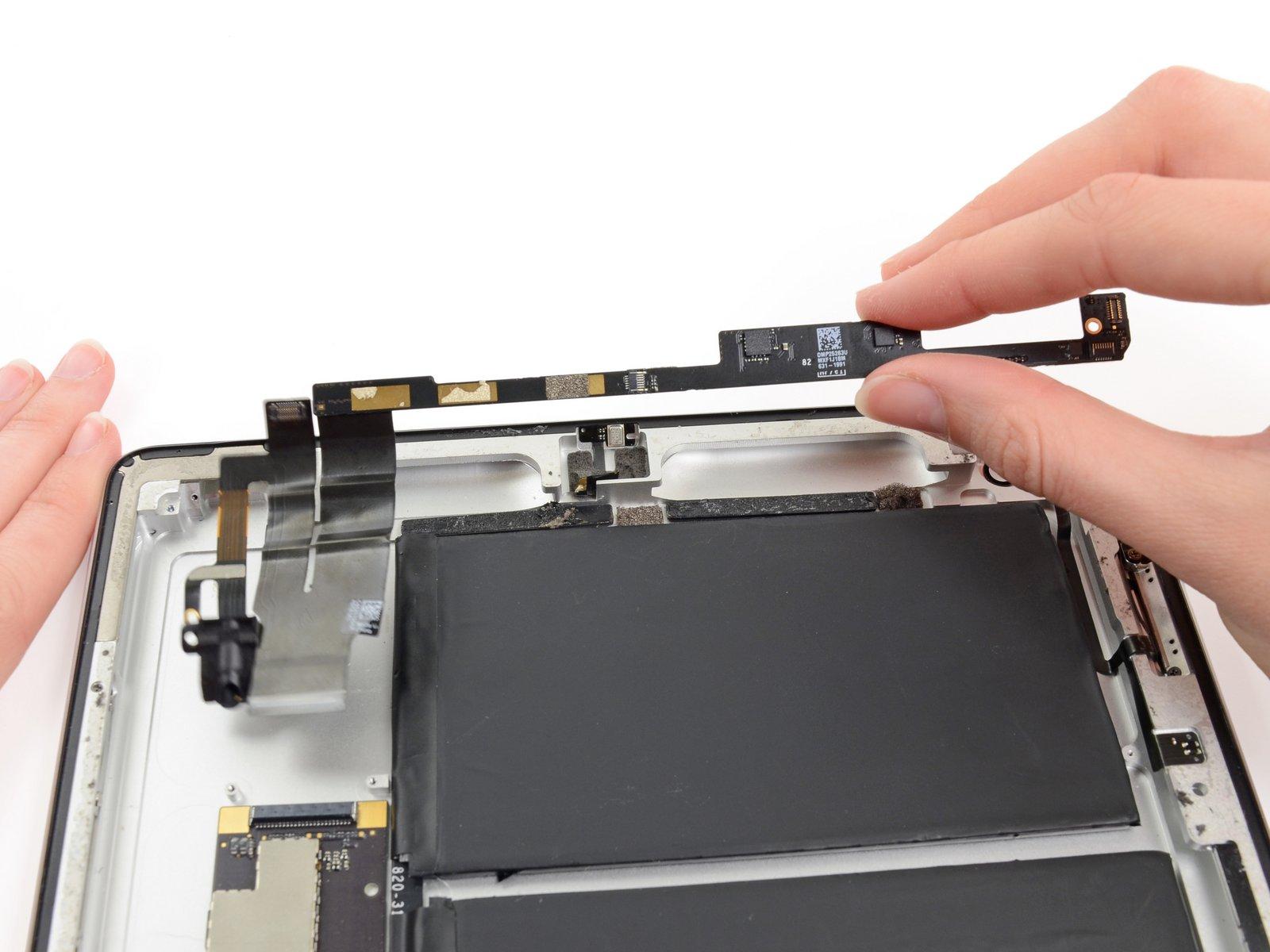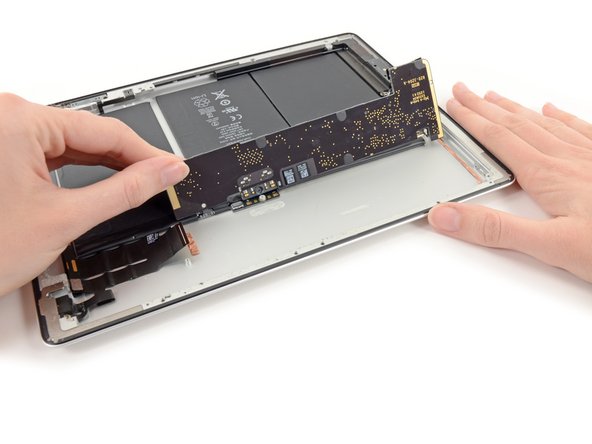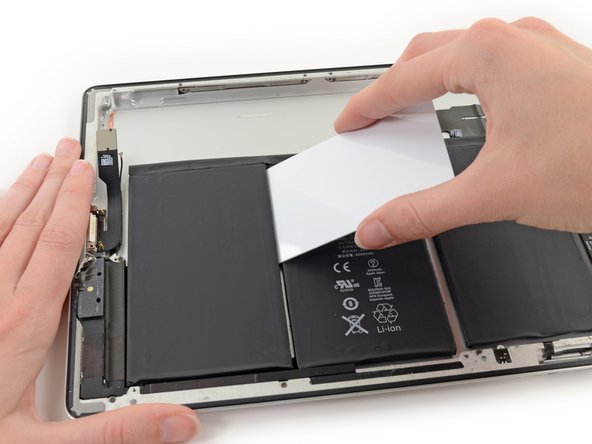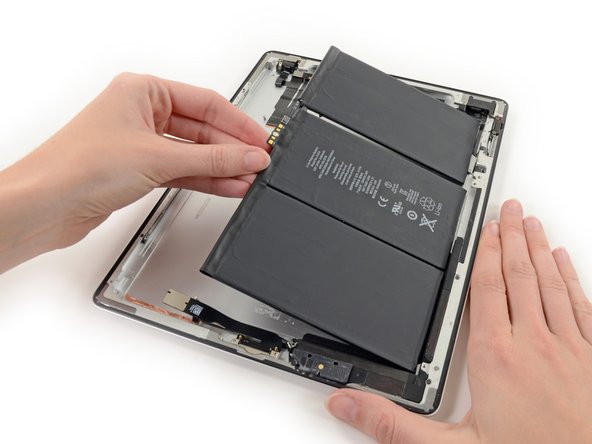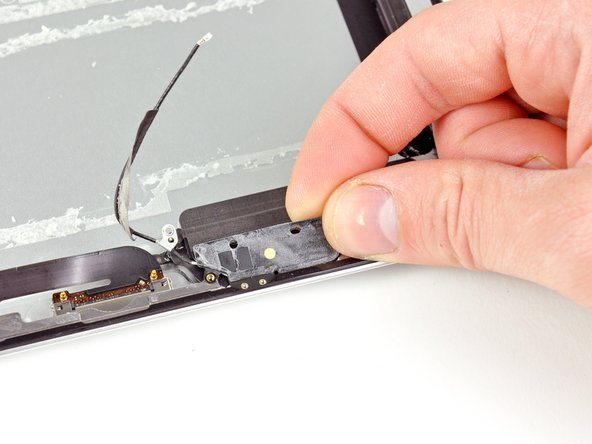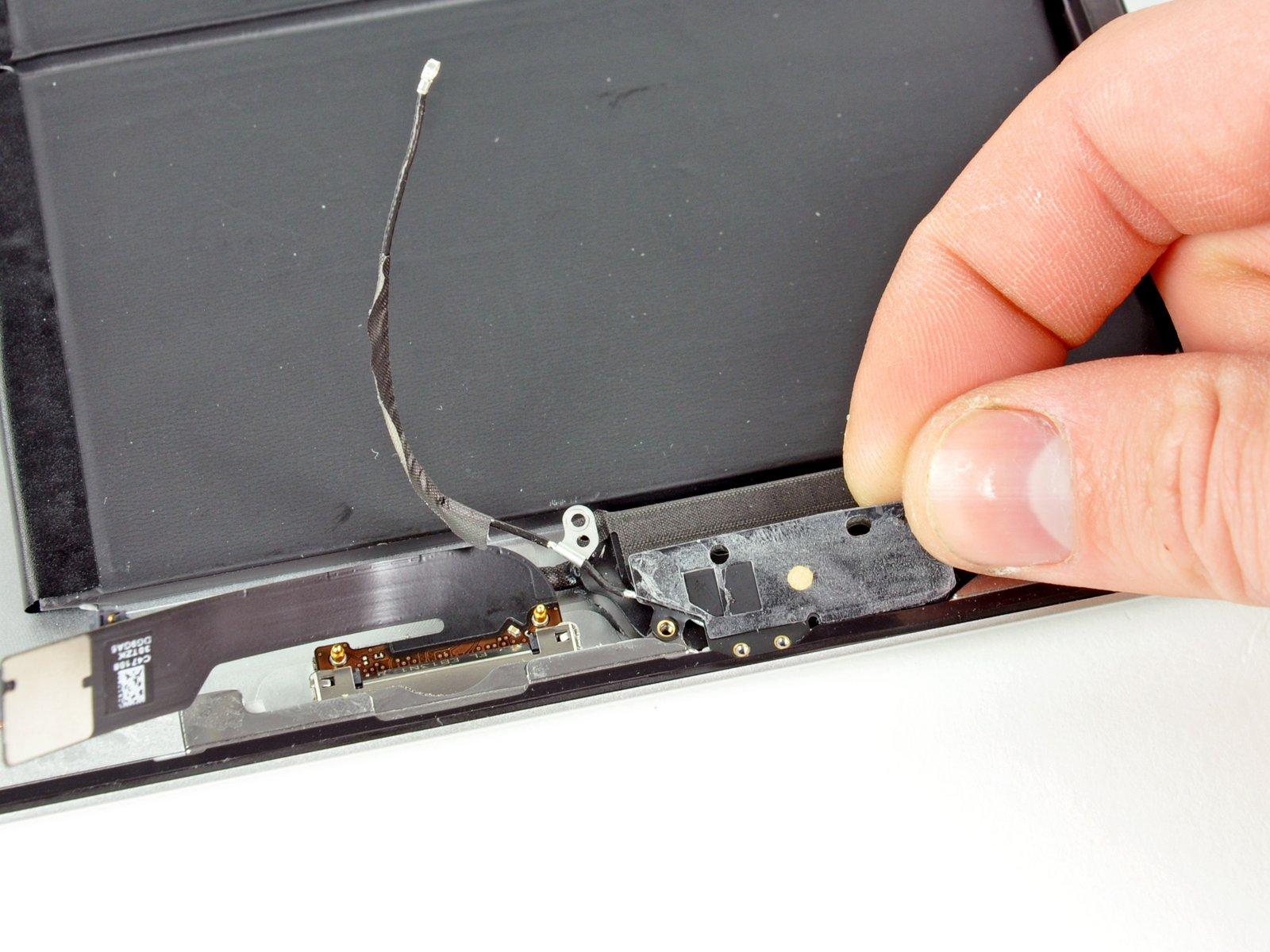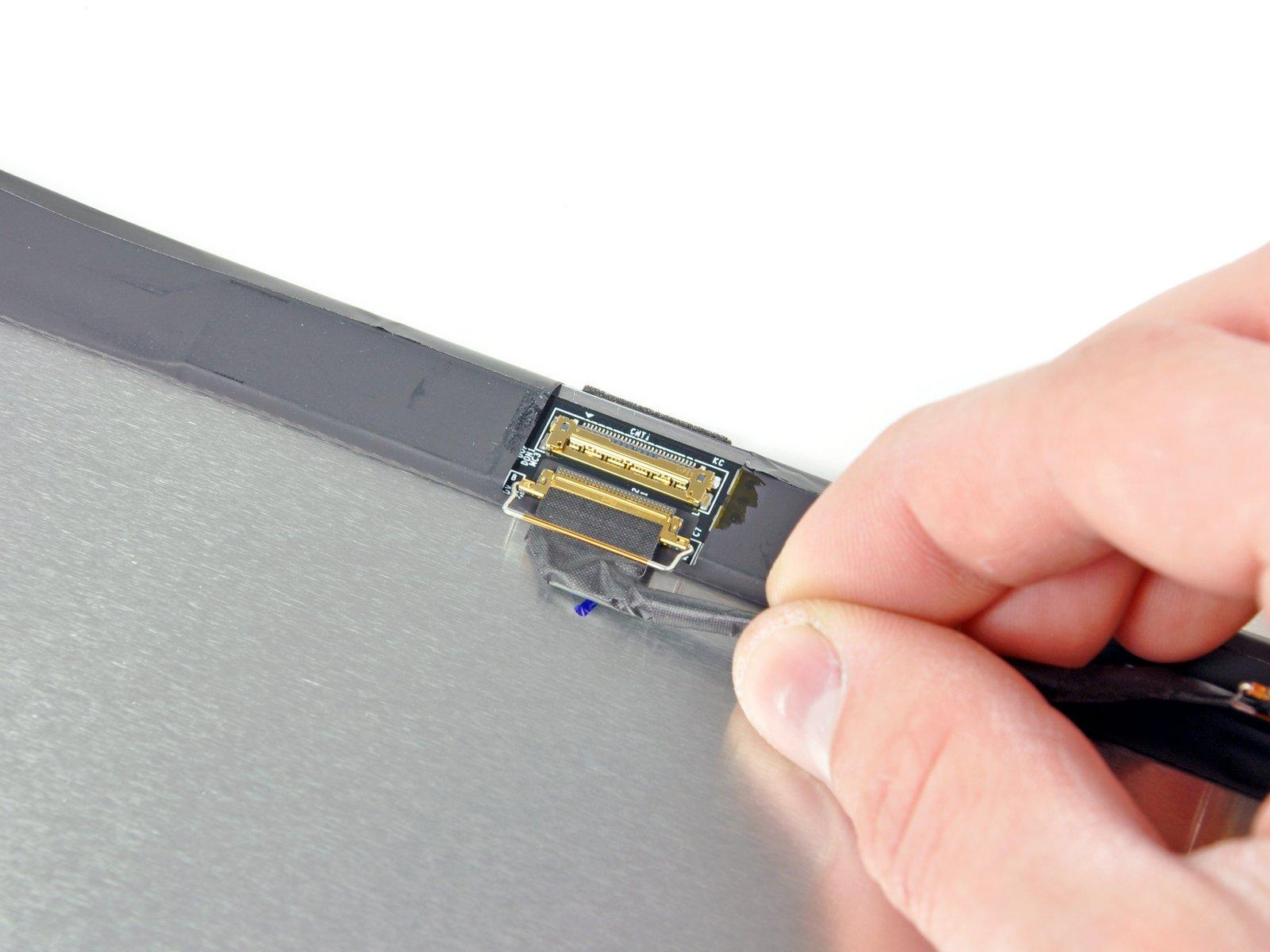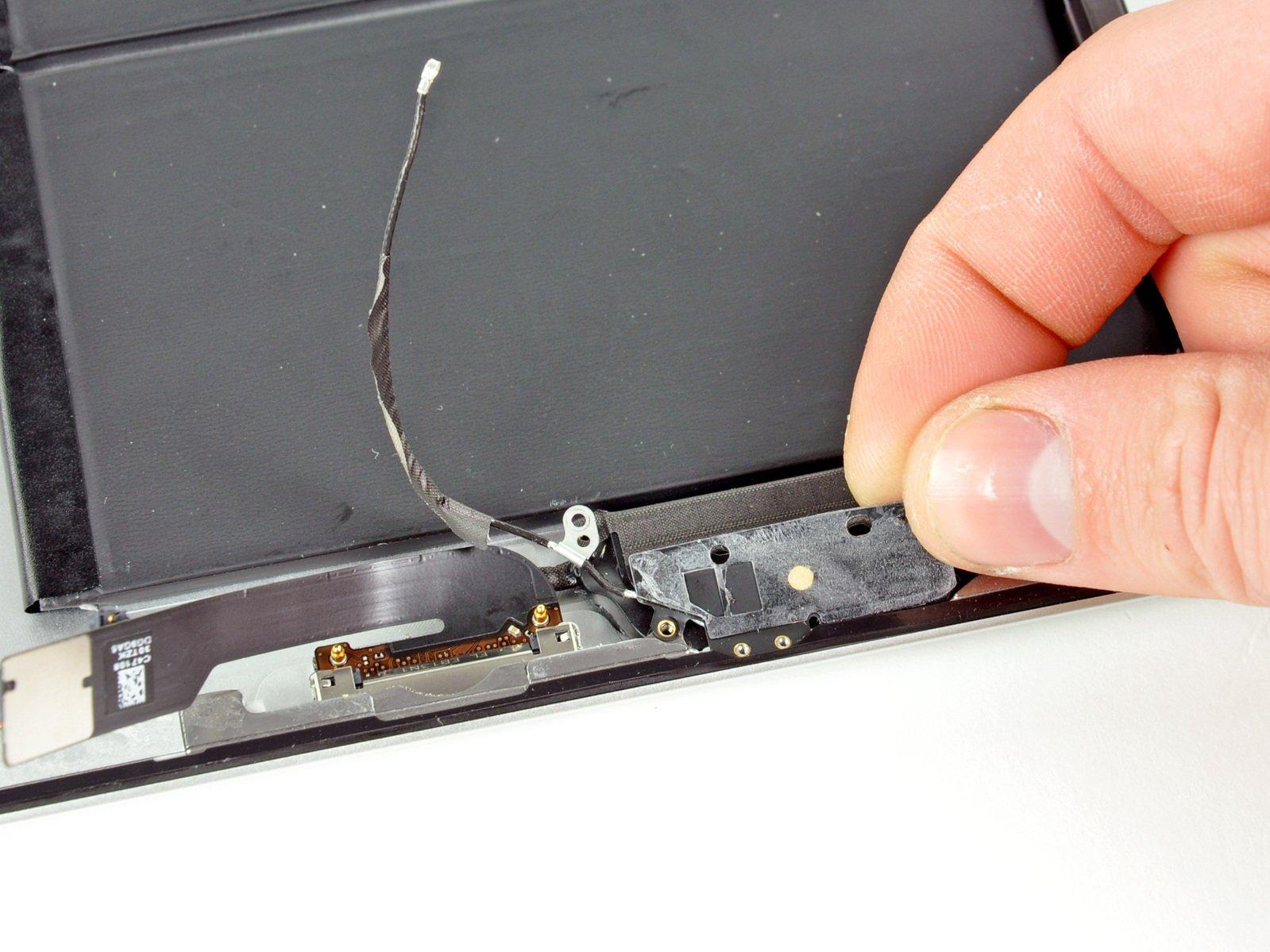iPad 2 Wi-Fi EMC 2560 Speaker Assembly Replacement Guide
Duration: 45 minutes
Steps: 74 Steps
Hey there, repair rockstar! Just a friendly reminder: tackling repairs can sometimes get a bit tricky, so if you find yourself in a pickle, don’t hesitate to reach out for a helping hand. You can always schedule a repair with our awesome team!
Ready to give your device a voice? This guide will walk you through the process of swapping out the speaker assembly. Let’s get started on this sound adventure together!
Step 1
Before you dive into this repair, give your microwave a little TLC! A quick clean will ensure that any pesky residue doesn’t stick to your iOpener. Trust us, your future self will thank you!
– Pop that iOpener right in the middle of the microwave and let it get cozy!
Tools Used
Step 2
Watch out for overheating your iOpener during the repair—no one wants a pop! Keep it cool and don’t let it go beyond 100˚C (212˚F).
If your iOpener looks a bit puffed up, give it some space; don’t touch it!
If the middle of the iOpener is still too toasty to handle, keep using it while it takes a little breather before you reheat. A well-heated iOpener should stay cozy for about 10 minutes.
– Pop that iOpener in the microwave for thirty seconds to get it nice and toasty.
– As you work through the repair, keep that iOpener warm by giving it a quick reheat in the microwave for another thirty seconds whenever it starts to cool down.
Tools Used
Step 3
Careful with that iOpener! It’s going to be pretty toasty, so handle it with care. An oven mitt might be your best buddy here.
– Carefully take the iOpener out of the microwave, making sure to grab it by one of the flat ends to keep your fingers safe from the hot center.
Tools Used
Step 4
No microwave? No problem! Just pop that iOpener into some boiling water to warm it up.
– Grab a pot or pan and fill it up with enough water to give your iOpener a nice, cozy bath.
– Bring that water to a boil and then, whoosh, turn off the heat!
– Time for a dip! Place your iOpener into the hot water and let it soak for 2-3 minutes, ensuring it’s fully submerged for maximum warmth.
– Using tongs (safety first!), carefully lift the heated iOpener out of the hot water.
– Give your iOpener a good towel dry – we want it nice and snug!
– And voilà! Your iOpener is all set and ready to roll! If it needs a little more warmth later, just repeat the boiling and soaking process for another 2-3 minutes. If you need help, you can always schedule a repair.
Tools Used
Step 5
Put on those safety glasses to keep your peepers safe, and remember to handle that LCD screen with care!
– If your display glass is sporting some cracks, let’s keep things safe and sound while you work your magic—grab some tape and secure that glass!
– Layer on some clear packing tape over your iPad’s display, making sure to cover every inch like a protective superhero cape.
– Stick to the guide as best as you can! Just a heads up, once that glass starts to crack, it might get a little wild, so you may need to employ a metal prying tool to help scoop out the shards. You’ve got this!
Step 6
Just a heads up, while you’re tackling this task, you might encounter some tricky broken glass. We highly recommend rocking a pair of safety glasses to keep those pesky shards from flying your way. Stay safe and stylish!
– Place the iOpener comfortably on the right edge of your iPad, making sure it sits snugly for optimal contact with the surface.
– Give the bag a little time to work its magic by letting it rest on the iPad for about 90 seconds before diving into the front panel.
Tools Used
Step 7
Getting that wedged tip of the opening tool in between the glass and plastic might take a bit of elbow grease. Stay patient and keep it cool, gently wiggling the plastic tool back and forth as needed. You’ve got this!
– Hey there! Look closely at your iPad and you’ll notice a tiny gap in the adhesive ring, right up in the upper right corner. It’s about 2.0 inches (~5 cm) from the top. Let’s take advantage of this little weakness!
– Now, let’s get to work! Line up your tool with the mute button and gently slide the tip of your plastic opening tool into that gap between the front glass and the plastic bezel. Just nudge it in there, just enough to widen that crack a bit. You’re doing great!
Step 9
– With the tip of your trusty plastic opening tool snugly positioned between the front glass and the plastic bezel, gently slide a plastic opening pick into that little gap right next to your tool. You’re doing great!
Step 10
– Gently take the plastic opening tool out of the iPad’s grip and slide the opening pick a bit deeper under the front glass, about half an inch down. You’re doing great!
Step 12
The adhesive is super strong, so you might need to put in some elbow grease. Just take your time and be gentle.
If you spot the tip of the opening pick sneaking under the front glass, give it a gentle tug outwards. While it’s perfectly safe to use the pick at this depth, just a heads up—it might leave a little adhesive residue on the LCD. No biggie, just part of the adventure!
– As the iOpener warms up the bottom edge, let’s start peeling away that pesky adhesive from the right edge of the iPad.
– Gently glide the opening pick down along the iPad’s edge, freeing the adhesive as you go. You’re doing great!
Tools Used
Step 13
As you work on releasing the adhesive, you might find it helpful to reposition the warm iOpener back onto the right edge of the iPad. Just keep in mind how long the iPad has been cooling off while you’ve been busy. Every little bit helps!
– If the opening pick decides to play hard to get in the adhesive, just give it a gentle roll along the edge of the iPad to keep freeing that sticky stuff. You’re doing great!
Tools Used
Step 14
– Before you pop out the first opening pick from the bottom corner of the iPad, slide in a second pick along the right edge of the front glass. This little buddy will help keep that pesky adhesive from sticking back down.
– Give your iOpener a little warm-up, then place it at the top edge of the iPad. Let’s keep things cozy while we work!
Tools Used
Step 15
Hey there! The Wi-Fi antenna is snugly attached to the bottom right edge of the iPad’s rear case with screws and a cable. Since it’s positioned just so, make sure to handle it with care—otherwise, you could accidentally cause some serious damage to that antenna. Let’s keep it safe and sound!
– Alright, friends! The next few steps need a bit of finesse, so let’s take it slow and steady.
– You’ll want to gently free the adhesive that’s holding the antenna to the front panel. Just remember to be super careful not to harm those delicate connections at the bottom of the iPad. Follow along with the next steps, and you’ll be a pro in no time!
Step 16
Hey there! Just a friendly reminder: don’t slide that pick beyond the bottom right corner. You might accidentally mess with the Wi-Fi antenna, and we wouldn’t want that!
– Gently glide the opening pick around the bottom right corner of the iPad to set the adhesive free. Let’s get that thing open!
Step 17
Take a moment to gently slide the opening pick along the bottom right edge of the front panel. Be careful, as the Wi-Fi antenna is sneaky and hangs out near the corner. If you’re not careful with the adhesive, it might get cut off, and we wouldn’t want that!
Just gently wiggle that pick out from under the front glass—no need to go all the way! Keep about 1/8″ (3 mm) of the tip snugly tucked under there for now.
– Gently glide the tip of the opening pick along the bottom edge of the iPad to free up that sticky adhesive over the Wi-Fi antenna. You’ve got this!
Step 18
– Alright, once you’ve gracefully glided past the Wi-Fi antenna (that’s about 3″ or 75 mm from the right edge, or snug up next to the home button), pop that opening pick back in all the way.
– Now, gently slide the pick to the right to free the adhesive that’s holding the Wi-Fi antenna tight against the front glass. You’ve got this!
Step 19
Remember, don’t heat that iOpener for more than a minute at a time! Give it a breather of at least two minutes before you heat it up again. You’ve got this!
If the adhesive has gotten a bit too chill along the bottom edge, give the iOpener another round in the heat to warm things up where you’re working.
– Keep peeling away that adhesive along the bottom of your iPad! Gently pull the opening pick out far enough to navigate around the home button, then slide it back in to a depth of about 1/2 inch (10 mm) once you’ve passed the home button. You’re doing great!
Tools Used
Step 20
– Keep on peeling that adhesive along the bottom edge of the iPad like a pro!
– Once you’ve got that going, slide the opening pick under the front glass near the home button and let it rest there.
Step 22
If the adhesive has cooled down a bit too much, just swap out the iOpener along the top edge and keep at it! And if the iOpener itself has taken a chill, give it a little reheat and you’re good to go!
– Gently glide the opening pick along the top edge of your iPad, giving it a little tug to navigate around the front-facing camera bracket.
– This section has some seriously strong adhesive, so don’t be shy about applying a bit of muscle! Just take it slow and steady to avoid any slips that could lead to trouble for you or your iPad.
– If your opening pick seems to be stuck in the adhesive, try giving it a little ‘roll’ like we showed you in step 9.
Tools Used
Step 23
If the adhesive is feeling cozy and warm, go ahead and take the iOpener off your iPad for a smoother experience. But if it’s still clinging on a bit too tightly, no worries! Just reheat that iOpener and place it on the left edge while you get to work. You’ve got this!
– Keep peeling away that adhesive along the top edge of your iPad, and gently slide the opening pick around the top left corner. You’ve got this!
Tools Used
Step 24
The digitizer cable is hanging out about 2 inches (50 mm) from the bottom of your iPad. When you reach around 2.25 inches (60 mm) from the bottom, it’s time to stop sliding that pick!
– Gently slide the opening pick along the left edge of your iPad, letting the adhesive release as you go. The adhesive is a bit thin here because of the digitizer running along the entire left side. Just be careful not to go too deep (no more than 1/2 inch or 10 mm) to avoid any accidental damage to the digitizer.
Step 25
Be super careful! The bottom of the digitizer cable is just about an inch (25 mm) from the iPad’s base. Take your time and make sure to keep this cable intact while you work your magic.
– With your trusty opening pick still tucked under the bottom edge of your iPad, give a gentle nudge to the adhesive in the bottom left corner to set it free.
Step 26
– Grab an opening pick and gently lift the bottom right corner of the iPad, then use your fingers to hold it in place like a pro.
Step 27
Watch out for any leftover sticky stuff that might be lingering around! Grab an opening pick to slice through any adhesive still holding that front panel in place. You’ve got this!
– Grab your iPad by the top and bottom right corners, and gently twist the front glass away from the device like you’re opening a book.
– When it’s time to put everything back together, give that LCD a little TLC with a microfiber cloth and some compressed air to wipe away any dust bunnies or fingerprints before you seal the glass back on.
Step 28
– Time to get your toolkit ready! Start by unscrewing those four 2.0 mm Phillips screws that are holding the LCD snugly against the rear case. You’ve got this!
Step 29
To get to those sneaky front panel ribbon cables hiding beneath the LCD, just give the LCD a gentle flip to the side for a quick peek. You’ve got this!
– Gently lift the LCD from the edge closest to the volume buttons and flip it out of the rear case, just like you would turn a page in a book—easy peasy!
– Now, lay the LCD face down on the front panel, giving it a cozy spot to rest.
Step 30
Just a friendly reminder: make sure you’re lifting those hinged retaining flaps, not the sockets themselves. You’ve got this!
Check out the second picture where the retaining flaps are marked in red. They’re your guiding stars for this step!
– Gently slide the edge of your trusty plastic opening tool under the retaining flaps of those two digitizer ribbon cable ZIF sockets and lift them up with care. You’ve got this!
Step 31
– Grab your trusty plastic opening tool and gently coax the digitizer cable away from the shields on the logic board. It’s like peeling a sticker, but with more finesse!
– Now, with care and a bit of flair, tug on that digitizer cable to free it from the adhesive that’s holding it snug against the rear case. You’re almost there!
Step 32
– Gently tug the digitizer ribbon cable straight out from both of its cozy little sockets on the logic board. You’ve got this!
Step 33
To get that front panel assembly off, you’ll want to carefully slide the ribbon cable out from between the case and the LCD. Just give the LCD a little nudge to create some extra space. You’ve got this!
– Gently lift the LCD from the edge that’s farthest from the digitizer cable and flip it back towards the rear case—think of it like closing a book with a little flair!
– While keeping the LCD raised, carefully slide the front panel away from your iPad. Watch out for that digitizer cable—let’s avoid any tangles with the rear case or LCD!
Step 34
To get into the iPad’s inner workings, we first need to gently flip the LCD out of its cozy case.
– Gently lift the LCD from the long edge near the volume buttons and flip it out of the rear case, just like you’re turning a page in your favorite book.
– Carefully place the LCD face down on a clean surface. A soft cloth underneath is a great idea to keep it scratch-free!
Step 35
Just a heads up: when you’re disconnecting that connector, make sure to gently pull it straight out instead of yanking it upward. We want to keep everything in tip-top shape!
– Grab your trusty plastic opening tool and gently nudge that display data cable lock upwards.
– Now, give the display data cable a gentle tug to free it from its cozy socket.
Step 36
– Carefully detach the LCD assembly from the rear panel assembly, like peeling a banana but with a bit more finesse!
Step 37
– First things first, if there’s any tape hanging out on the dock connector cable, grab your trusty plastic opening tool and gently remove it.
– Next up, use the edge of that plastic opening tool to carefully lift the dock connector cable’s connector from its cozy little spot on the logic board.
– Finally, peel the dock connector ribbon cable away from the rear panel like a pro!
Step 38
Take it easy when prying; aim for the connector only, not the socket on the logic board. Messing with the socket could lead to a real bummer!
– Gently lift the speaker cable connector straight up from its cozy spot on the logic board.
Step 39
– Time to tackle those screws! Let’s get them out of the way:
– Next up, gently detach the metal bracket from the rear case. You’re doing great!
Step 40
– If there’s a piece of tape hanging out at the end of the headphone jack/control board cable, grab some tweezers and gently pull it off. It’s just tape, but every little step counts in this repair journey!
Tools Used
Step 41
Make sure you’re prying up on the hinged retaining flap, not the socket itself. You’ve got this!
– Grab your trusty spudger and gently lift the retaining flap on the headphone jack/control board cable ZIF socket. You’ve got this!
Tools Used
Step 42
– Gently slide the tip of your trusty spudger under the headphone jack/control board ribbon cable to give it a little separation. You’ve got this!
Tools Used
Step 43
– Let’s get those two 2.1 mm Phillips screws out of the way! They’re holding down the second metal bracket right by the digitizer cable socket. Grab your screwdriver and let’s do this!
– Now that the screws are gone, gently lift that metal bracket off the rear case. You’re on the right track!
Step 44
– Gently nudge the logic board upwards using the edge of a plastic opening tool to break free from the adhesive that’s holding it snugly to the rear case. Remember, a little finesse goes a long way!
Step 45
Hold your horses! Don’t go yanking it out just yet. There’s still an antenna cable hanging on for dear life.
– Gently lift the logic board out of the rear case and give it a little flip toward the battery like it’s doing a happy dance.
Step 46
– Gently nudge the Wi-Fi antenna connector with the spudger’s tip to lift it from its cozy spot on the logic board.
– Carefully take out the logic board from the case, as if you’re unveiling a hidden treasure.
Tools Used
Step 47
– Pop that iOpener in the microwave for a quick minute to get it nice and toasty!
– Once it’s warmed up, place the cozy iOpener on the back of your iPad, just to the right of center (that’s the side away from the rear-facing camera). Let it chill there for 90 seconds to work its magic on the battery adhesive.
– Now, slide the iOpener to the center of the iPad’s back and let it hang out for another 90 seconds.
– Finally, move the iOpener over to the left edge (the side with the rear-facing camera) and give it another 90 seconds to do its thing. You’re doing great!
Tools Used
Step 48
As you dive into this process, you’ll be carefully sliding some thin plastic cards between the battery and the rear case of your iPad to free the adhesive that’s holding the battery snugly in place. Remember to keep those cards nice and flat to steer clear of bending the battery. A bent battery might lead to some not-so-fun consequences, like leaking dangerous chemicals. Let’s keep it safe and sound!
If you’re feeling some serious stickiness, give that iOpener another warm hug and try the last step again. The adhesive just needs a bit more time to loosen up and let go.
– Turn the iPad over and gently slide a plastic card between the bottom battery cell and the rear case. You’re doing great!
Tools Used
Step 49
– Kick things off with the battery cell that’s closest to the dock connector. Grab a plastic opening tool and gently slide it under the edge of the battery nearest to the logic board void. This will create just enough space for you to slip in a plastic card. You’ve got this!
Step 50
– Gently slide the card into the corner of the case and wiggle it inward to loosen up any stubborn adhesive. Keep it smooth and steady!
Step 51
– Gently maneuver the card around the corner and slide it along the side of the case to the cell.
Step 52
– Slide the card into the bottom corner, right near the headphone jack, to gently release that side of the battery cell. You’re doing great!
Step 53
– Gently glide the card along the edge of the cell to loosen any stubborn adhesive that’s still hanging on. You’ve got this!
Step 54
– Carefully nudge the edge of the battery cell away from the case, like you’re giving it a gentle push to say, ‘It’s time for a break!’
Step 55
– Carefully lift the corner of the battery away from the case to start releasing the last side of the dock side cell.
Step 57
– Slide a second plastic card under the edge of the battery cell that’s closest to the headphone jack, making sure to go along the side next to the logic board void. You’re doing great!
Step 58
– Gently slide the card in to loosen that pesky corner of the cell from the adhesive. You’re doing great!
Step 59
– Gently pry the corner of the cell away from the case to set it free.
Step 60
– Gently slide the card under the opposite corner to loosen up some more of that pesky adhesive.
Step 61
– Give it one last gentle swipe to tackle that pesky adhesive.
Step 62
– Just give it one last gentle pry, and you can let the card chill right there to keep the battery lifted away from the sticky stuff. You’ve got this!
Step 63
Step 64
– Carefully lift the bottom of the cell away from the case.
– Work on the dock side corner to peel it up from the sticky adhesive.
– Give it another gentle nudge near the cable to loosen the cell even more.
Step 65
– Gently slide a corner of the card under the top edge of the cell, right next to the logic board void. It’s like giving it a little nudge to get things going!
– Now, use the screw post as your trusty pivot point to lift the last bit of adhesive under the battery connector board. You’re almost there!
Step 66
Handle the battery connector board with care—no need to bend it like a pretzel! Take extra caution when working around the screw post on the aluminum rear case; we want to keep everything in tip-top shape!
Step 68
– Gently lift up the dock connector and speaker cables to uncover the hidden treasure that is the Wi-Fi antenna cable.
– Carefully detach the Wi-Fi antenna cable from the rear panel like a pro.
Step 69
– Unscrew the four screws listed below with care:
Step 70
– Gently peel the Wi-Fi antenna away from the speaker enclosure and take it out of the iPad 2. You’ve got this!
Step 71
Make sure those little EMI foam rings are happily sticking to the dock connector cable.
– Gently detach the dock connector cable from the speaker cable.
Step 72
– Grab a plastic opening tool and gently slide it under the edge of that big ol’ tape strip holding the speaker assembly to the back panel. Give it a little peel up!
– Now, use your fingers to carefully peel that tape off the speaker assembly. Easy peasy!
Step 73
– Unscrew the two screws you’ve got there!
Step 74
– Grab your trusty plastic opening tool and gently slide it along the edge to nudge the speaker assembly out from its cozy spot on the right side of the rear panel.
– Now, give that speaker assembly a little tug and free it from the iPad 2!
